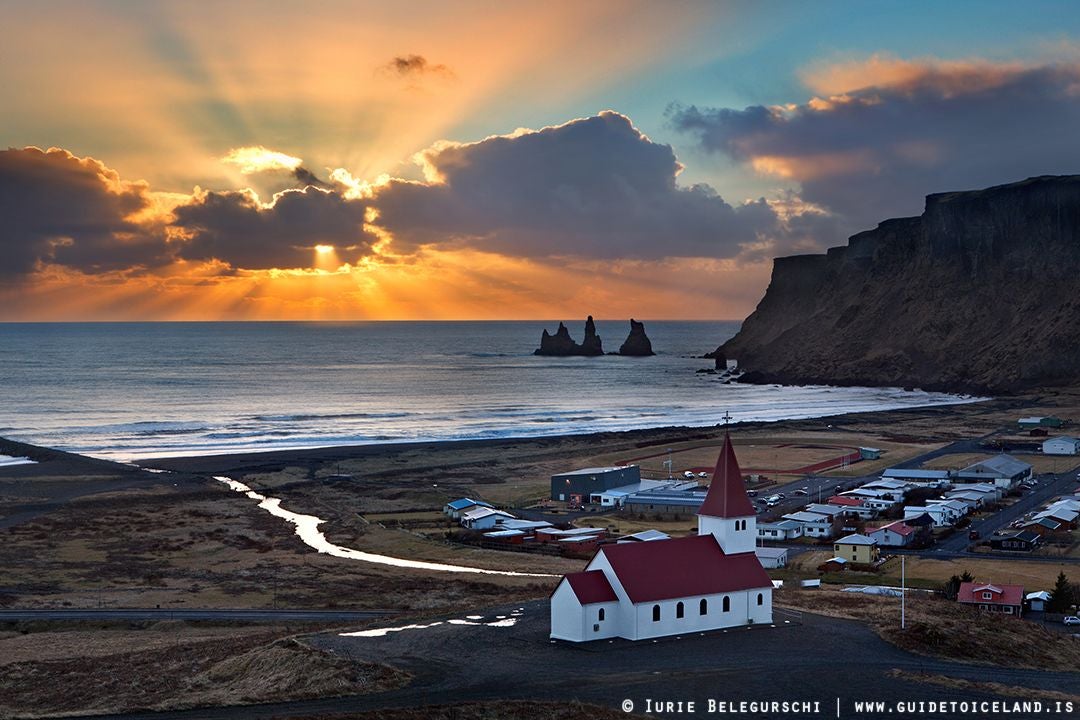
Discover the best things to do in North Iceland, from dramatic landscapes and historic villages to rich wildlife and outdoor adventures. Explore top places to see in North Iceland and find out which destinations to add to your North Iceland travel itinerary.
North Iceland is a must-visit for those seeking an unforgettable Icelandic adventure. With its rugged coastline, volcanic peaks, and geothermal wonders, this region showcases Iceland’s raw natural power and is featured in many of the top vacation packages in Iceland.
Why You Can Trust Our Content
Guide to Iceland is the most trusted travel platform in Iceland, helping millions of visitors each year. All our content is written and reviewed by local experts who are deeply familiar with Iceland. You can count on us for accurate, up-to-date, and trustworthy travel advice.
Hikers can tackle challenging trails, wildlife lovers can spot whales and puffins, and history buffs can explore historic ruins and learn of Viking sagas. Whatever your passion, North Iceland promises to ignite your sense of adventure and wonder, especially on self-drive tours when exploring freely with a rental car.
Continue reading to learn more about the must-visit towns, natural attractions, and cultural locations.
North Iceland Highlights
-
North Iceland: More Than Just Northern Lights — While the northern lights are a huge draw in the winter, North Iceland has a ton to offer year-round. There's plenty to explore, from historic towns to natural wonders.
-
Whale Watching Wonderland — Husavik is the place to be for whale watching. With a near 100% sighting rate in the summer months, you’re sure to see the gentle giants of the ocean.
-
Geothermal Goodness — North Iceland is dotted with geothermal hotspots. Relax in the Earth Lagoon (Myvatn Nature Baths), take a dip in the Hofsos Swimming Pool, or even try a beer spa for a unique experience.
Top Towns To Visit in North Iceland
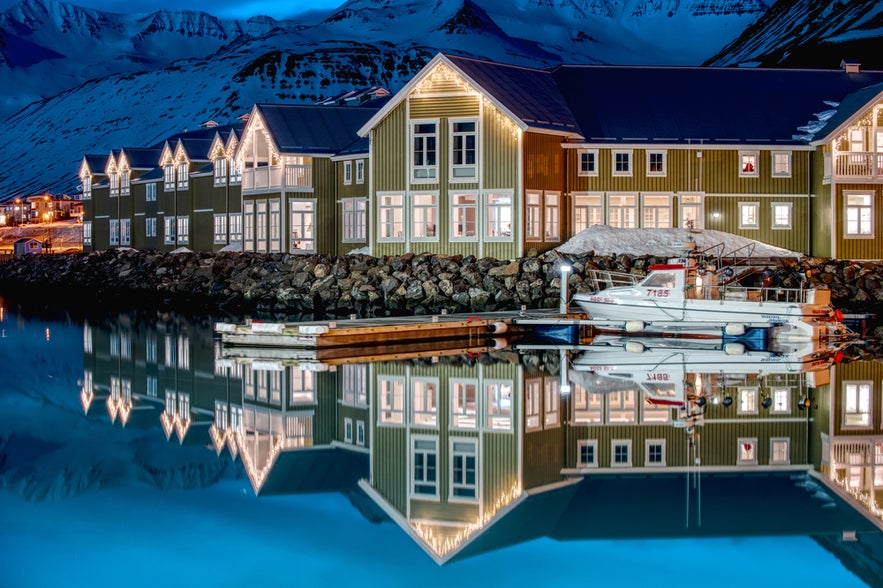 From the earliest Norse settlements to some of the most picturesque attractions in the country, North Iceland has much to offer.
From the earliest Norse settlements to some of the most picturesque attractions in the country, North Iceland has much to offer.
You'll find many charming towns and villages along the coast, including the largest town in the region, Akureyri. Here are some other gems worth checking out.
11. Siglufjordur
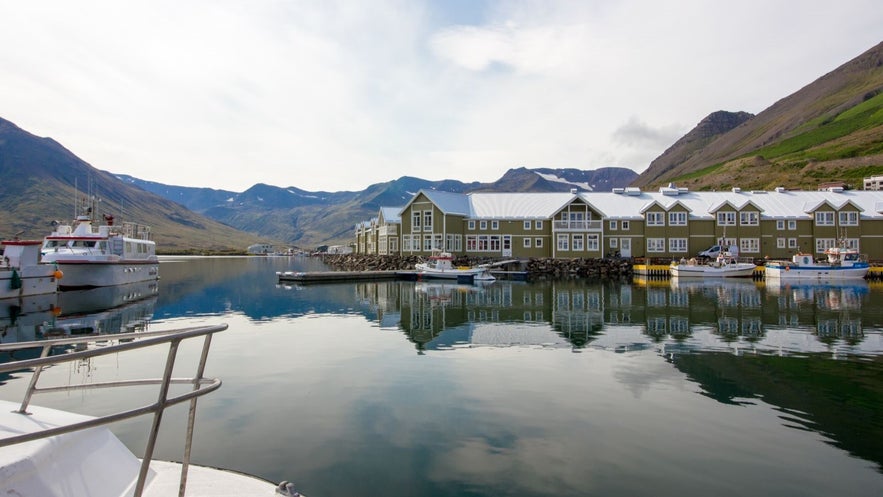
Situated in a narrow fjord, Siglufjordur is a small, idyllic fishing town. It’s located about 48 miles (77 kilometers) northwest of Akureyri.
Despite its relatively small size, Siglufjordur was once the main hub for herring fishing in the North Atlantic. Its population grew to 3,000 during the herring boom of the 1940s and 1950s but has since declined. Today, Siglufjordur’s population is around 1,300.
This charming town features some interesting cultural attractions, including the Herring Era Museum — the largest maritime museum in Iceland. It gives visitors a glimpse into the rich history of herring fishing in Iceland and how the industry shaped the country’s economy.
Music is an integral part of the history of Siglufjordur. In early July, the town hosts a folk music festival with conferences, performances, and workshops that draw performers and music lovers from all over the world.
The town is framed by a beautiful fjord and high mountains, making it a popular destination for seasoned hikers and an incredible spot for bird-watching.
Siglufjordur has nice restaurants, a cafe, a bar, and a small geothermal swimming pool. Check out these Siglufjordur accommodations and enjoy your time in this charming town.
10. Husavik

Husavik was the first area of Iceland to be settled by a Norseman. Garðar Svarvarsson, a Swedish Viking, spent a winter there in A. D. 870.
When Garðar moved on the following spring, he left behind a man and two servants. They established a farm, which became Husavik. The town’s name means "Bay of Houses," and it’s believed this name refers to the homes Garðar built there.
Today, Husavik has affectionately earned the nickname "the whale-watching capital of Iceland." Tour operators boast a 100% sighting rate during summer months, making it one of the best places in Iceland for whale-watching tours.
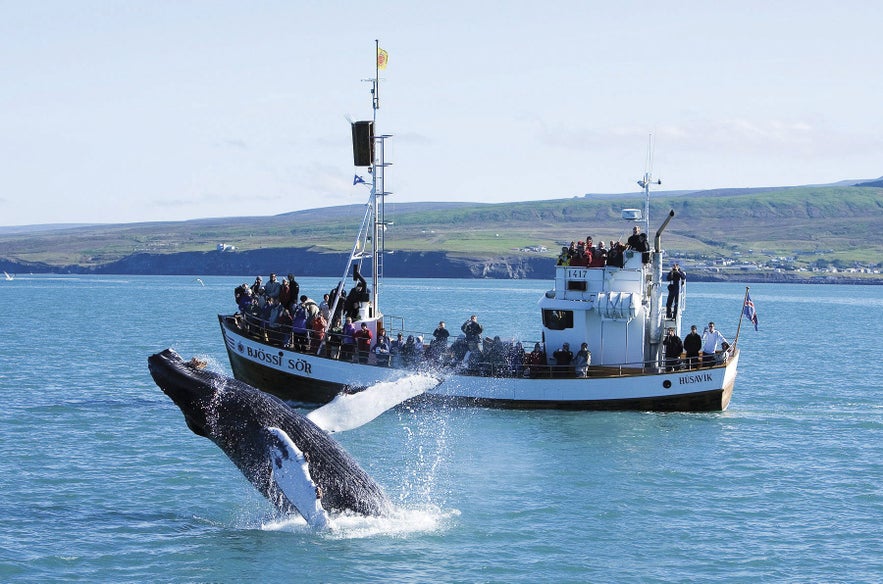
Other marine life seen in the bay includes white-beaked dolphins and harbor porpoises. Fin whales and orcas have occasionally been spotted as well.
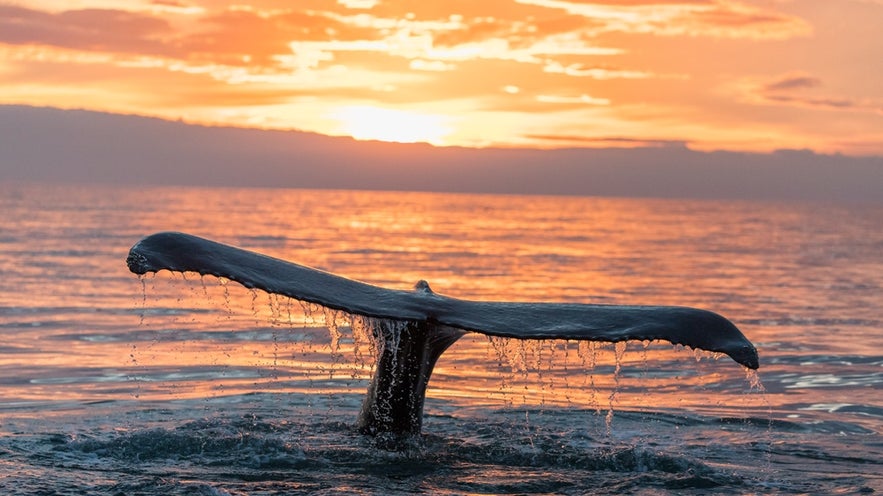 If you want to learn more, the Husavik Whale Museum features exhibits that highlight the ecology of these fascinating animals. It also offers interactive displays and informative presentations.
If you want to learn more, the Husavik Whale Museum features exhibits that highlight the ecology of these fascinating animals. It also offers interactive displays and informative presentations.
Once you've explored all Husavik has to offer, enjoy a rejuvenating dip in the GeoSea Geothermal Sea Baths overlooking Skjalfandi Bay. Remember to book ahead of time to guarantee availability.
Book one of these Husavik accommodations and experience the culture of this historic town.
9. Hofsos
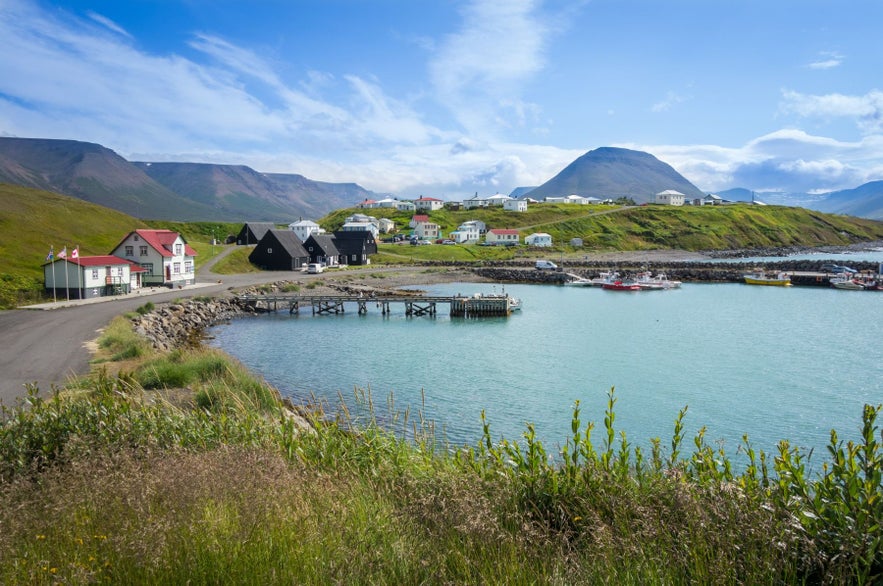
Hofsos is one of the oldest trading ports in Iceland, dating back to the 16th century. This small fishing village of around 160 people is situated 23 miles (37 kilometers) east of Saudarkrokur.
There are plenty of great reasons to visit Hofsos, especially if you’re a history buff. The town is home to the Icelandic Emigration Centre, a museum that details the westward migration of Icelanders to North America at the start of the 19th century.
Another must-see is the 1238 Battle of Iceland Museum in the Skagafjordur Fjord. The exhibition highlights Orlygsstadabardagi, the biggest battle in Iceland's history, which was fought in the fjord.
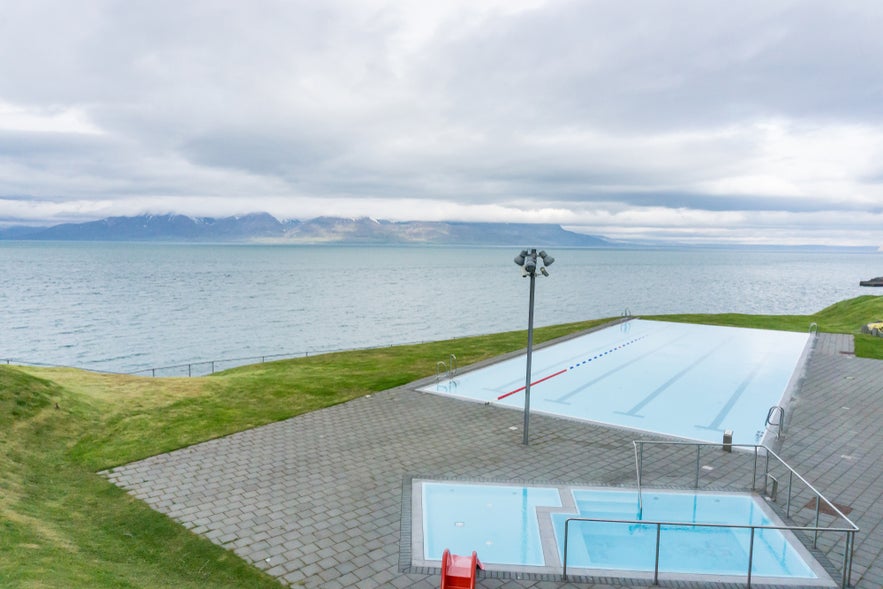 The village is also known for the fantastic Hofsos Swimming Pool. It's considered one of Iceland's best geothermal public pools because of the beautiful views over Skagafjordur Fjord.
The village is also known for the fantastic Hofsos Swimming Pool. It's considered one of Iceland's best geothermal public pools because of the beautiful views over Skagafjordur Fjord.
If you’re taking a self-drive tour of the region, consider making the Hofsstadir Country Hotel your home base.
- If you're interested to learn more about the past, check out: The History of Iceland
8. Dalvik
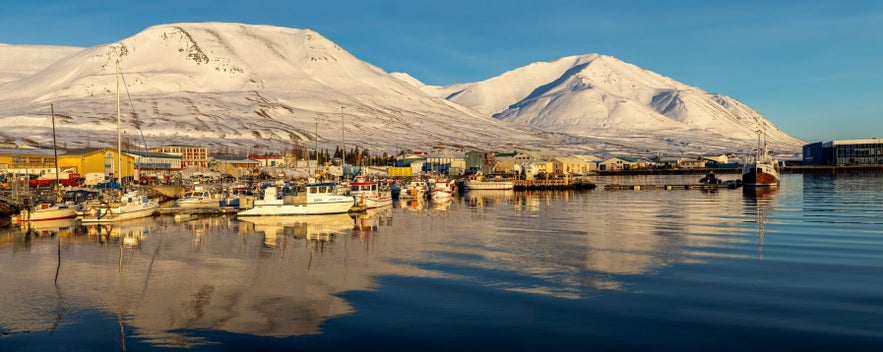
The tranquil town of Dalvik is nestled at the foot of the towering Trollaskagi Peninsula Mountains, just 27 miles (44 kilometers) from Akureyri. Fishing is the backbone of the local community, which is reflected in the lively Dalvik Harbor.
Dalvik’s landscape is the ideal backdrop for a family-friendly whale-watching tour, where you’re likely to catch a glimpse of a humpback whale. Afterward, stop for a bite at a charming cafe or relax in the Dalvik Swimming Pool.
The town is also known as the best place in the country for alpine skiing, so keep that in mind if you're planning a winter visit to Iceland. Many Icelandic Olympic skiers are from Dalvik.
The town is also home to the tallest Icelander on record. Jóhann K. Pétursson lived there from 1913 till his passing in 1984. He was 7.67 feet tall (2.34 meters) and nicknamed Jóhann risi or "the giant" by locals.
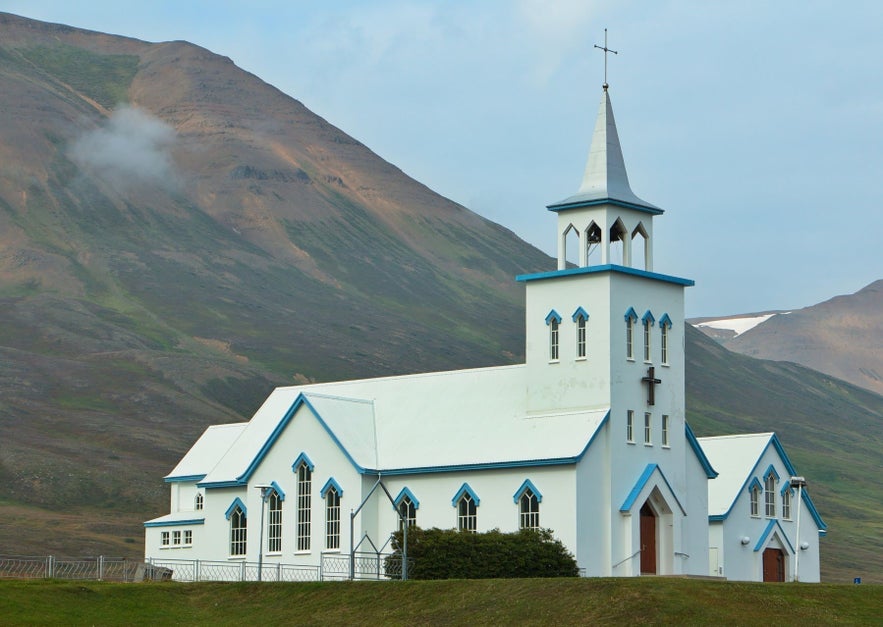
Don’t forget to see the Dalvik Church. It’s very beautiful and worth a visit.
You can find comfortable accommodations in Dalvik; the town makes for a convenient base when exploring the surrounding region.
Natural Attractions in Northern Iceland
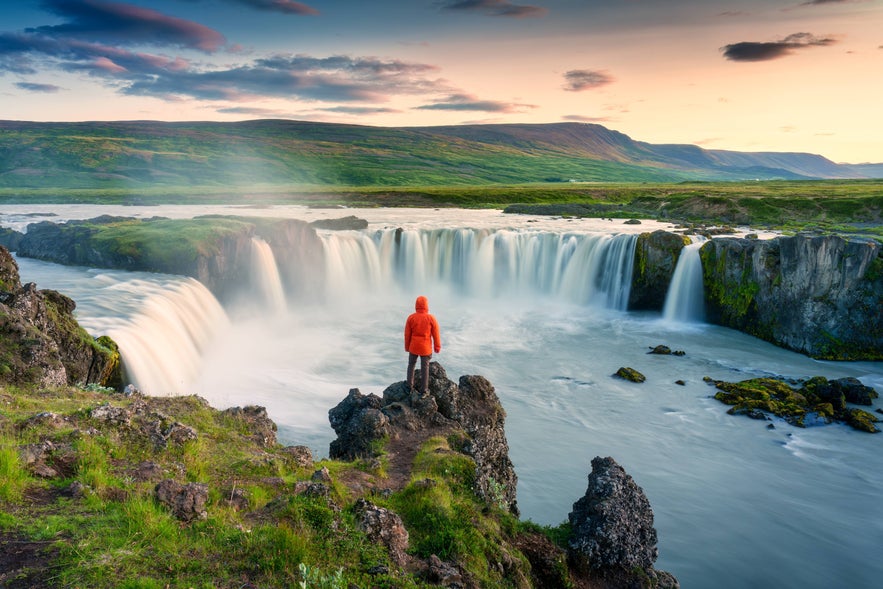 The northern region of Iceland is home to some astonishing landscapes and geological wonders. Consider these when planning your trip.
The northern region of Iceland is home to some astonishing landscapes and geological wonders. Consider these when planning your trip.
7. Grimsey Island
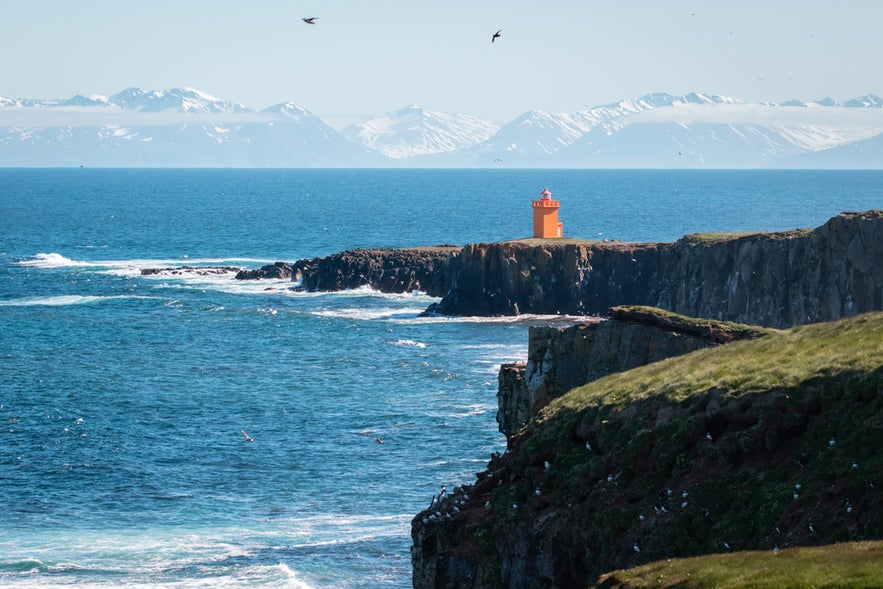 Grimsey Island is the northernmost inhabited land mass in Iceland. It’s situated about 24 miles (40 kilometers) off the coast of the mainland. The island straddles the Arctic Circle so closely that it is the only part of Iceland that’s genuinely in the Arctic.
Grimsey Island is the northernmost inhabited land mass in Iceland. It’s situated about 24 miles (40 kilometers) off the coast of the mainland. The island straddles the Arctic Circle so closely that it is the only part of Iceland that’s genuinely in the Arctic.
Due to the oscillation of the Earth’s axis, the Arctic Circle shifts each year. A monument was constructed in 2017 to reflect this shift. The 8.8-ton (7,983 kilograms) stone called Orbis et Globus or "Circle and Sphere" is moved every year to signify the shift. Since its construction, the Orbis et Globus Memorial has become one of the most visited spots on the island.
The small town on Grimsey Island is worth exploring. Rest your feet by hopping on the little train that drives around its main attractions.
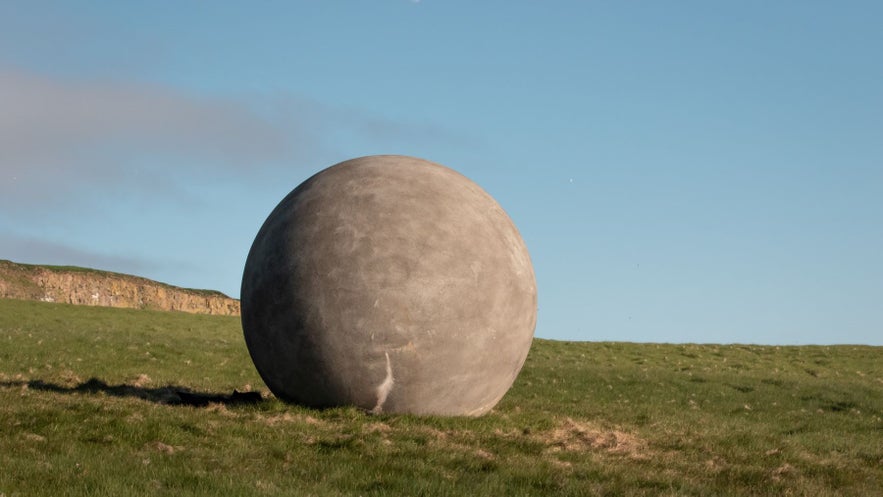
Once you’ve seen the town, take time to explore the island’s ecosystem. Although almost entirely treeless, Grimsey Island is home to a vast array of natural vegetation, including marshland, grass, and moss.
The highlight for many visitors is the Atlantic puffins, which nest there until the winter migration. Grimsley Island is home to many other birds such as auks, razorbills, and the northern fulmar.
- See also: Birds in Iceland
6. Asbyrgi Canyon
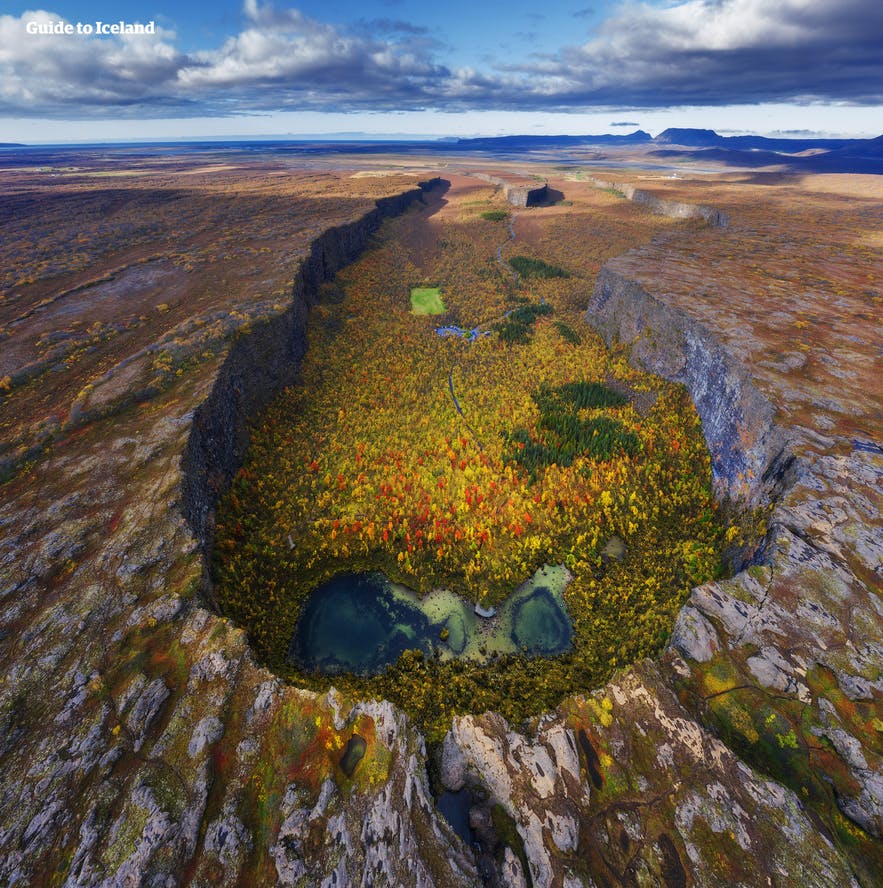
Asbyrgi Canyon is a popular tourist destination about 23 miles (38 kilometers) east of Husavik. The canyon is in Vatnajokull National Park and is part of the Diamond Circle Sightseeing Route.
Asbyrgi Canyon was most likely formed by glacial flooding after the last ice age. Its steep 328-foot (100-meter) cliffs with birch and willow woodlands provide some of the most breathtaking views in the country.
Icelandic folklore states that Asbyrgi Canyon's horseshoe shape was created when Odin’s eight-legged horse stepped on the ground. Other local stories describe Asbyrgi as the capital city of Iceland’s Huldufolk, or hidden people.
Many claim to have seen the magical creatures in the caverns and cracks of the canyon. You might not be lucky enough to see one, but you may stumble across another elusive creature — the Arctic fox.
- See also: Folklore in Iceland
- Learn more about the Arctic Fox | A Tale of Iceland's Only Native Mammal
The nearby Jokulsargljufur Canyon became part of Vatnajokull National Park in 2008. It is known for the strange rock columns created by a volcanic eruption 8,000 years ago. These columns were named Hjodaklettar, meaning "rock of echoes."
5. Dettifoss Waterfall
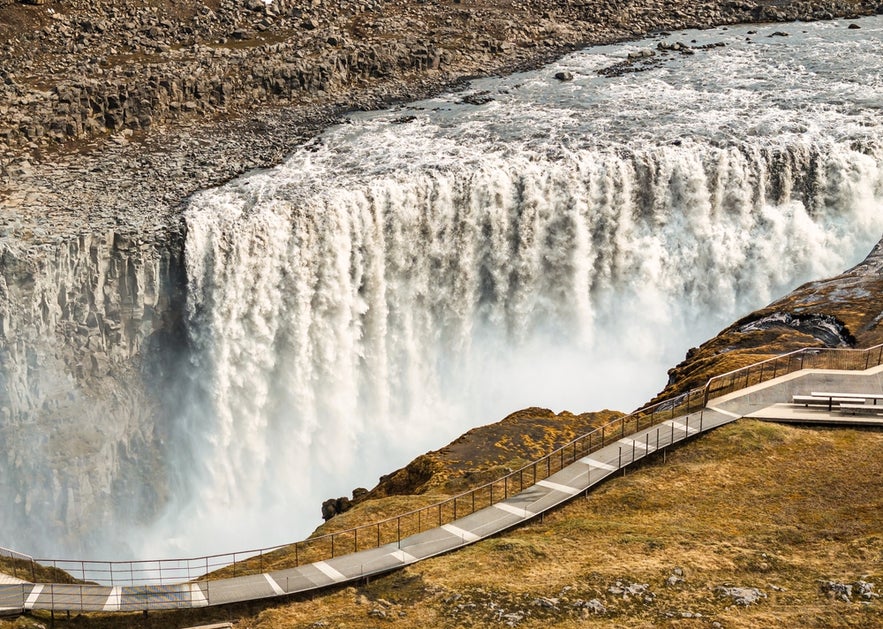 Dettifoss Waterfall is one of the most powerful in Europe. Science fiction fans might recognize it from the opening scene of Ridley Scott’s 2012 film "Prometheus". Sediment turns the water greyish-white, giving the waterfall its otherworldly appearance.
Dettifoss Waterfall is one of the most powerful in Europe. Science fiction fans might recognize it from the opening scene of Ridley Scott’s 2012 film "Prometheus". Sediment turns the water greyish-white, giving the waterfall its otherworldly appearance.
The falls are fed by the Jokulsa a Fjollum River, which gets its water from the Vatnajokull Glacier. Dettifoss Waterfall is 328 feet (100 meters) wide and drops 144 feet (44 meters) into the Jokulsargljufur Canyon.
- See more: Waterfalls in Iceland
- Also, check out Movie Locations in Iceland: The Complete List
There are two roads to visit Dettifoss Waterfall: the east side and the west side. While visitors can use either side, the west features a well-maintained hiking path and a viewing platform that allows you to witness its power and hear the deafening roar.
Make a day out of your visit to Dettifoss Waterfall and check out the surrounding hiking trails. You can also visit the beautiful Selfoss Waterfall, which is only a short walk upstream.
4. Lake Myvatn
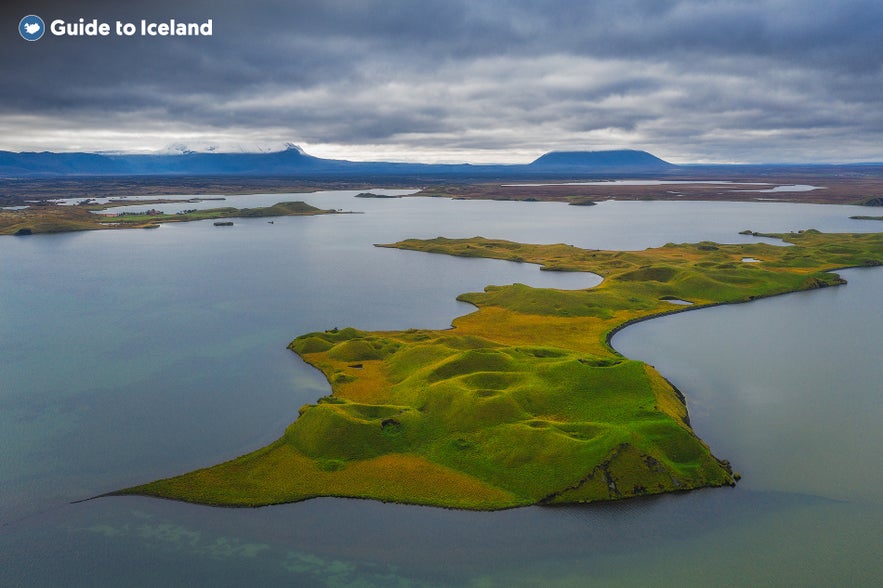
One of the most famous natural attractions in North Iceland is the astonishing Lake Myvatn. The lake and surrounding area are one of Iceland's most distinctive and diverse natural areas and a key part of all Diamond Circle tours.
Lake Myvatn and the surrounding land are composed of craters, lava formations, and hot springs shaped by a volcanic eruption 2,300 years ago. Skutustadagigar Craters, or pseudo-craters, dot the surface, and walking paths allow you to get a closer look.
The region's volcanic past is on display. The nearby Hverfell Crater makes for a stunning hike. You can also visit the Krafla Volcano, known for its striking caldera, and the Viti Crater, a geothermal lake formed in the aftermath of an eruption.
The Namafjall Geothermal Area, also known as Hverir, is another natural wonder near Lake Myvatn. Its boiling mud pots, steaming vents, and a distinct sulphuric smell starkly contrast the lush greenery around the lake.

On the edge of Lake Myvatn, you'll find Dimmuborgir Lava Field. This vast area of unusually shaped lava fields and rock formations formed after a volcanic eruption over 2,000 years ago.
It's best to spend a few days in the area to experience everything. Book accommodations in Lake Myvatn so you don't miss the beautiful natural surroundings.
Cultural Attractions in North Iceland
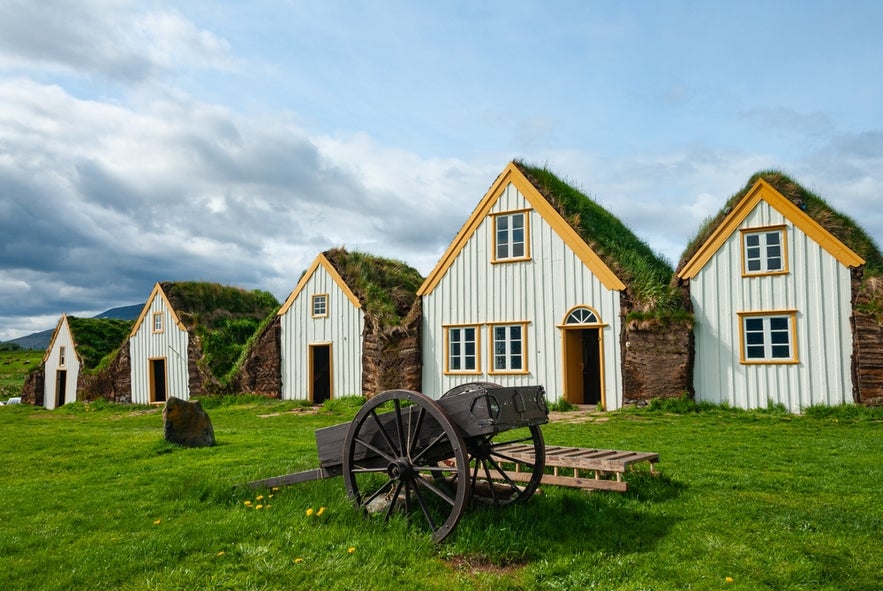 Plenty of engaging activities in North Iceland allow you to experience the regional culture. These are some of the top things to do in Northern Iceland and fun places to include on your itinerary.
Plenty of engaging activities in North Iceland allow you to experience the regional culture. These are some of the top things to do in Northern Iceland and fun places to include on your itinerary.
3. Earth Lagoon (Myvatn Nature Baths)
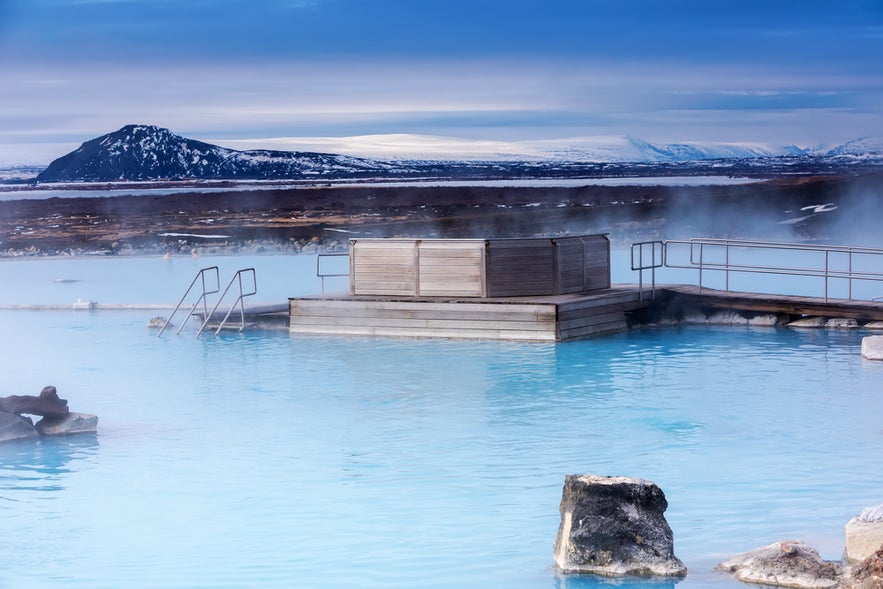 No trip to Lake Myvatn is complete without a visit to the Earth Lagoon. There, you’ll relax in vibrant blue geothermal pools while taking in stunning views of the surrounding landscape.
No trip to Lake Myvatn is complete without a visit to the Earth Lagoon. There, you’ll relax in vibrant blue geothermal pools while taking in stunning views of the surrounding landscape.
The Earth Lagoon is the North's answer to the Blue Lagoon and one of the more luxurious experiences in the region. The waters are rich in minerals, which are believed to have skincare benefits. The lagoon is a popular destination for those seeking natural wellness treatments.
The warm water, which ranges from 97–104 F (36–40 C), is exhilarating during the winter. You can enjoy the steam bath and grab a delicious drink at the swim-up bar.
After your plunge, visit the Kvikan Cafe for a bite to eat and a steaming cup of tea or coffee.
The Earth Lagoon is open until 10:00 PM, offering amazing views in both the summer and winter. Book your Earth Lagoon visit in the summer to enjoy the midnight sun. Or, visit in the winter to witness a gorgeous sunset followed by starry skies. You may even spot the northern lights from the geothermal water.
2. Laufas Museum and Heritage Site
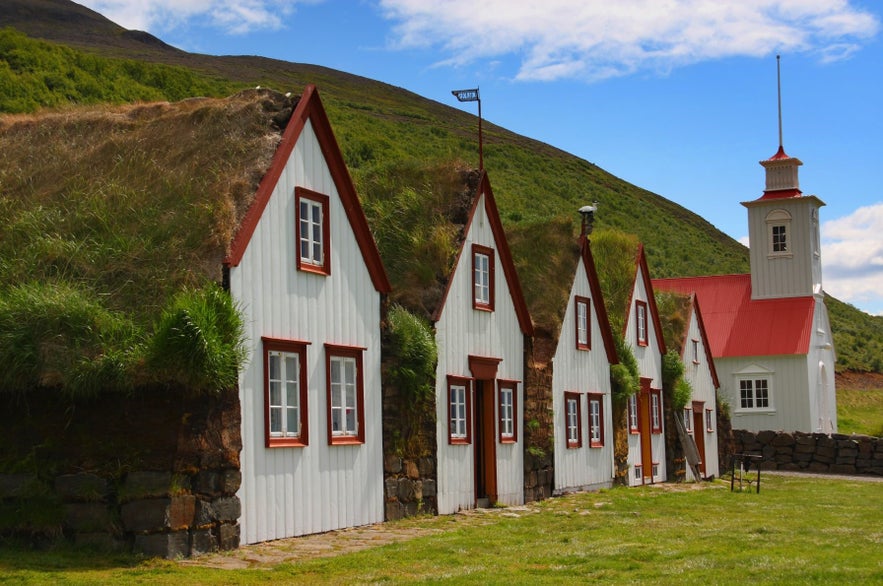
Turf homes have existed for as long as people have been constructing shelters. Many older Icelanders' grandparents were born and raised in turf homes, which were still common until the 1920s. However, the building style started disappearing in the early 20th century.
The turf houses still around today tend to be homes of the Icelandic upper class. The Laufas Museum and Heritage Site is a great example. It's about 15 miles (25 kilometers) from Akureyri and has a history almost as old as the first settlers.
The site was mentioned in settlement records between 874 and 930, but the houses you visit today were built between 1853 and 1882.
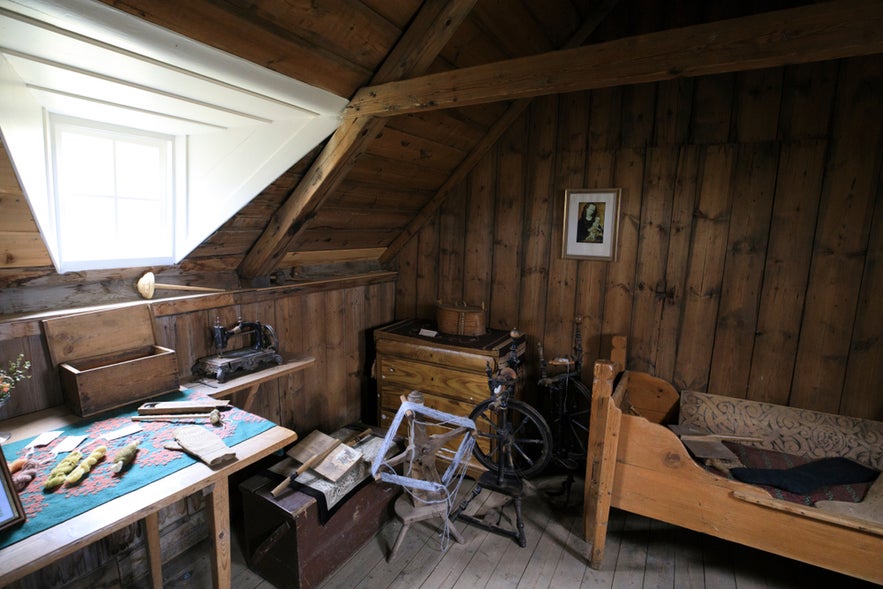 Visiting the Laufas Museum and Heritage Site is like stepping back in time. The turf homes are furnished to preserve the look at the turn of the 20th century. They're a great example of the building style of the time, though much larger than the average Icelander would have inhabited.
Visiting the Laufas Museum and Heritage Site is like stepping back in time. The turf homes are furnished to preserve the look at the turn of the 20th century. They're a great example of the building style of the time, though much larger than the average Icelander would have inhabited.
The site also includes a beautiful wooden church built in 1865. Like the turf homes, the church’s origins extend much further back. One of its key artifacts is a pulpit from 1698.
The site is part of the National Museum of Iceland's house collection and is run by the Akureyri Museum. Be sure to add this historic gem to your North Iceland itinerary.
1. Bjorbodin Beer Spa

Experience a unique way to recharge your batteries with a visit to the quirky Bjorbodin Beer Spa, where you’ll bathe in warm, young beer and live yeast. Each beer bath is equipped with a draft beer tap, so you can serve yourself a cold one while you relax.
The spa opened in the village of Askogssandur in 2017 and also features outdoor hot tubs filled with regular Icelandic water. They offer a fantastic view of the surrounding mountains, ocean, and Hrisey Island.
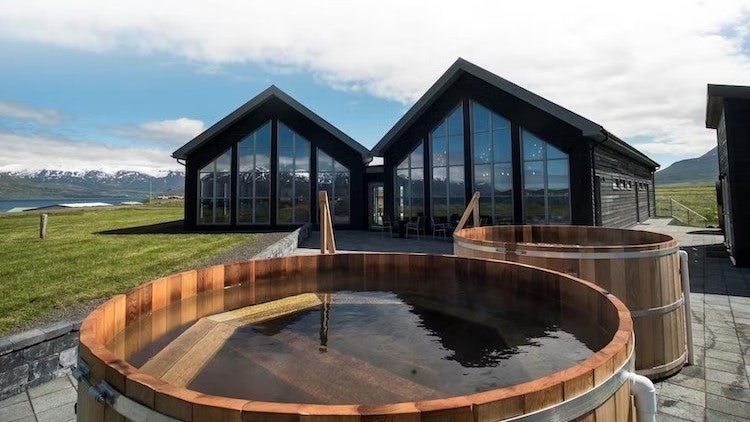
It'll come as no surprise that there's a bar at the spa, and you can grab a meal at the on-site restaurant. To make your visit even more convenient, the Kaldi Brewery operates the Hotel Kaldi. It's just a short walk from the spa, so you don't have to worry about driving after your beer bath.
How To Explore North Iceland
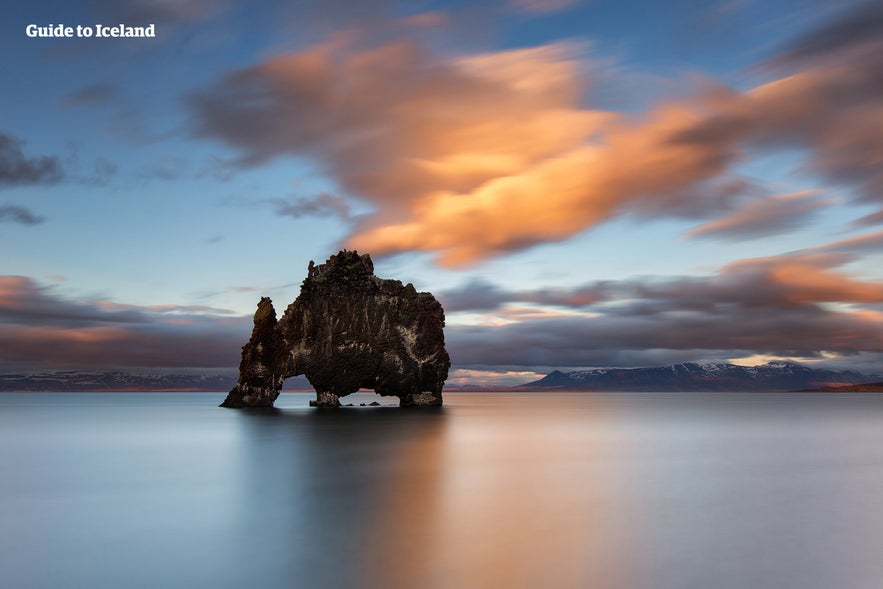 There are many ways to explore North Iceland. Whether you’re looking to roam at your own pace, take a guided tour, or embark on a multi-day adventure, you’ll find an option right for your trip.
There are many ways to explore North Iceland. Whether you’re looking to roam at your own pace, take a guided tour, or embark on a multi-day adventure, you’ll find an option right for your trip.
North Iceland Self-Drive Tours
-
9-Day Self-Drive Tour of the Ring Road & Snaefellsnes Peninsula — Explore Iceland’s Ring Road with stops in North Iceland.
-
1-Week Summer Self-Drive Tour of the Ring Road and Golden Circle — Bask in the midnight sun and take on stunning views on this tour around Iceland.
-
10-Day Northern Lights Self-Drive Tour of the Ring Road of Iceland — See Iceland’s awe-inspiring natural attractions on this self-drive winter adventure.
North Iceland Vacation Packages
-
10-Day Circle of Iceland Winter Vacation Package — Embark on a guided winter tour exploring highlights like the Jokulsarlon Glacier Lagoon, Lake Myvatn, the Snaefellsnes Peninsula, and the Golden Circle.
-
9-Day Northern Lights Winter Vacation Package in Iceland — Let the experts take the wheel on this ultimate Icelandic adventure.
-
11-Day Iceland Ring Road Summer Vacation Package — Experience an unforgettable journey featuring breathtaking landscapes, hidden gems, and iconic destinations.
Guided Multi-Day Tours Around North Iceland
-
Small Group 1-Week Guided Summer Tour — Take this summer adventure to explore North Iceland via the Ring Road and visit many sights.
-
8-Day Guided Tour of the Complete Ring Road — Circle Iceland on the Ring Road winter tour filled with glaciers, waterfalls, and volcanic landscapes.
-
6-Day Guided Tour of the Ring Road — Explore Iceland’s Ring Road with stops in North Iceland, ice caving, glacier hiking, and whale watching.
Guide Day Tours Around North Iceland
-
3-Hour Whale Watching Tour From Akureyri — Experience whale-watching and observe humpback whales and other marine life in Eyjafjordur.
-
1-Hour Snowmobile Tour of North Iceland — Get your adrenaline pumping on this snowmobile adventure. All necessary safety equipment is provided and requires no prior experience.
-
9-Hour Sightseeing Tour From Akureyri — Discover North Iceland's natural wonders, including Godafoss Waterfall, Lake Myvatn, Dettifoss, Selfoss, and the Namaskard Geothermal Area. Wrap up the day with a relaxing soak at the Earth Lagoon.
FAQs About Visiting North Iceland Destinations
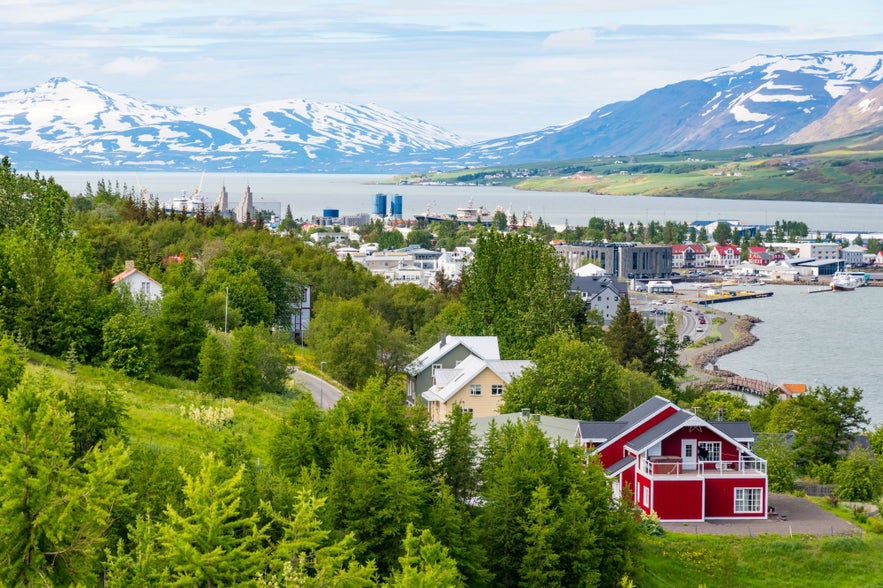 If you have some lingering questions, check out answers to these commonly asked questions.
If you have some lingering questions, check out answers to these commonly asked questions.
Are the roads in North Iceland safe for driving?
Yes, Route 1 (Ring Road) is paved and open year-round. However, snow and ice in winter will require 4x4 vehicles with winter tires, preferably studded ones. Some mountain roads (like F-roads) are only accessible in summer.
When is the best time to see the northern lights in North Iceland?
The best chance to see the northern lights is from September to March.
What should I pack for North Iceland?
Warm layers, waterproof jackets, and hiking boots are fine year-round. However, for icy paths in the winter, pack insulated clothing, gloves, and crampons.
Are there flights to North Iceland?
Domestic flights from Reykjavik to Akureyri are available year-round.
What time of the year is the North Iceland less crowded?
North Iceland is generally less crowded than the rest of the country. There are fewer tourists from April to May and September to October, but some attractions may be closed.
Is North Iceland expensive?
Yes, it’s fairly expensive. However, you can save money by renting affordable car options and staying at guesthouses instead of hotels.
Should I bring cash on my trip to North Iceland?
No, credit cards are accepted everywhere — even for small purchases. Cash mostly comes in handy if you want to shop at local markets.
What is Icelandic etiquette for outdoor travelers?
Stay on marked paths to protect fragile landscapes and be mindful of remote areas.
Are there any dangerous animals in the region?
No, Iceland has no dangerous wildlife like bears or venomous snakes.
Can I camp in North Iceland?
Yes, but you must stay in designated areas. Wild camping is restricted, and winter camping is risky due to harsh conditions.
Journey North
With its mix of charming villages, stunning natural wonders, and unique experiences like beer spas and whale watching, North Iceland offers something for everyone.
If you're looking for an adventure off the beaten path, a chance to connect with nature, or simply want to explore a place with a rich history and culture, North Iceland is worth the drive.
Has North Iceland piqued your sense of adventure? Which of these fantastic attractions have you seen on your journey around Iceland? Make sure to leave your thoughts and questions in the comment section below.




